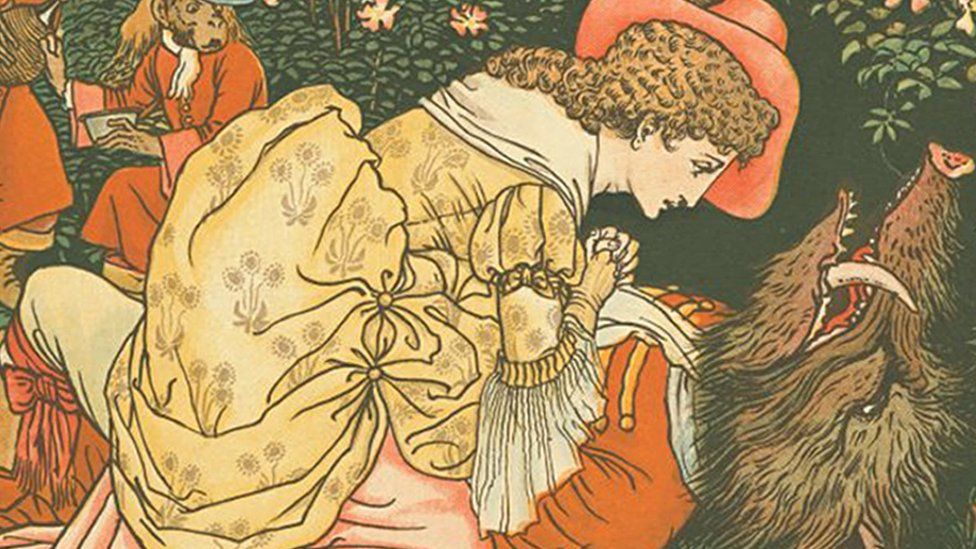Fairy tale origins thousands of years old, researchers say
- Published

Fairy tales like Beauty and the Beast can be traced back thousands of years, according to researchers at universities in Durham and Lisbon.
Using techniques normally employed by biologists, academics studied links between stories from around the world and found some had prehistoric roots.
They found some tales were older than the earliest literary records, with one dating back to the Bronze Age.
The stories had been thought to date back to the 16th and 17th Centuries.
Durham University anthropologist Dr Jamie Tehrani, said Jack and the Beanstalk was rooted in a group of stories classified as The Boy Who Stole Ogre's Treasure, and could be traced back to when Eastern and Western Indo-European languages split more than 5,000 years ago.
Analysis showed Beauty And The Beast and Rumpelstiltskin to be about 4,000 years old.
And a folk tale called The Smith And The Devil, about a blacksmith selling his soul in a pact with the Devil in order to gain supernatural abilities, was estimated to go back 6,000 years to the Bronze Age.
Once upon a time...
A blacksmith strikes a deal with a malevolent supernatural being, such as the Devil, Death or a genie.
The blacksmith exchanges his soul for the power to weld any materials together.
He then uses this power to stick the villain to an immovable object, such as a tree, to renege on his side of the bargain.
This basic plot is stable throughout the Indo-European speaking world, from India to Scandinavia, according to the research.
The study said this tale could be traced back to the Proto-Indo-European society when metallurgy likely existed and there was archaeological and genetic evidence of massive territorial expansions by nomadic tribes from the Pontic steppe (the northern shores of the Black Sea) between 5,000 and 6,000 years ago.
However, John Lindow, a folklorist at the University of California, Berkeley, casts doubt on the theory in Science News, saying the Proto-Indo-European vocabulary for working with metal was limited and the word "smith" might not have existed.
If true, that would mean the version of "The Smith and the Devil" used in the study may not be that old, he said.
'Pretty remarkable'
Dr Tehrani, who worked with folklorist Sara Graca Da Silva, from the New University of Lisbon, said: "We find it pretty remarkable these stories have survived without being written.
"They have been told since before even English, French and Italian existed. They were probably told in an extinct Indo-European language."
In the 19th Century, authors the Brothers Grimm believed many of the fairy tales they popularised, including Red Riding Hood, Cinderella, Hansel and Gretel and Snow White, were rooted in a shared cultural history dating back to the birth of the Indo-European language family.
Later thinkers challenged that view, saying some stories were much younger and had been passed into oral tradition, having first been written down by writers from the 16th and 17th Centuries.
Dr Jamie Tehrani said: "We can come firmly down on the side of Wilhelm Grimm.
"Some of these stories go back much further than the earliest literary record and indeed further back than Classical mythology - some versions of these stories appear in Latin and Greek texts - but our findings suggest they are much older than that."
'Biology toolkit'
The study, which was published in the Royal Society Open Science journal, employed phylogenetic methods to investigate the relationships between population histories and cultural phenomena, such as languages, marriage practices, political institutions, material culture and music.
It also used a "tree" of Indo-European languages to trace the descent of shared tales to see how far they could be demonstrated to go back in time.
Dr Tehrani explained: "We used a toolkit that we borrowed from evolutionary biology called phylogenetic comparative methods. This enables you to reconstruct the past in the absence of physical evidence.
"We've excavated information about our story-telling history, using information that's been preserved through the mechanism of inheritance, so in that sense they embody their own history.
"By comparing the folk tales that we find in different cultures and knowing something about the historical relationships among those cultures, we can make inferences about the stories that would have been told by their common ancestors," he told BBC Radio 4's Today programme.
- Published5 June 2014
- Published2 September 2012